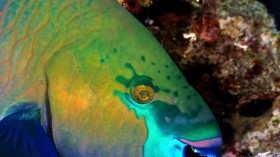An international team of astronomers has discovered five new Trojan asteroids sharing the same orbit as the planet Neptune.
Astronomer Hsing-Wen Lin of the National Central University in Taiwan detected the Neptunian Trojans through the Pan-STARRS (Panoramic Survey Telescope and Rapid Response System or PS-1) telescope, which is a wide-field imaging facility in Hawaii and is one of the best tools to search for the Trojans, comets, and even Centaurs.
"PS1 survey has a very wide survey area that is deep enough to cover a large part of the Neptune trojan cloud," Lin said in a statement. "PS1 currently is the only one with the capability to detect several Neptune trojans in a single survey."
The solar system is filled with Trojan Asteroids, which are objects that share the orbit of a planet or a larger moon. Over 6,000 of these types of asteroids are orbiting with Jupiter, and others are orbiting within Saturn's moons, around Earth, Mars, Uranus, and Neptune.
Previously, Neptune had 12 Trojans. But Lin's team discovered five new Neptune Trojans, which might also offer insight into where they come from. Using data obtained by the PS-1 survey that ran from 2010 to 2014, the researchers found four L4 Trojans, which orbit Neptune's L4 Lagrangian point 60 degrees ahead of the planet, and one L5 Trojan, which orbits the L5 region 60 degrees behind the planet. The objects were about 100 to 200 kilometers in diameter.
According to the researchers, the four L4 Trojans were primordial in origin, owing to their stability. However, the L5 Trojan was more unstable than the others, which led to the hypothesis that it was a new addition.
"The 2 of the 4 currently known L5 Neptune Trojans, included the one L5 we found in this work, are dynamically unstable and should be temporary captured into Trojan cloud," Lin told Universe Today. "On the other hand, the known L4 Neptune Trojans are all stable. Does that mean the L5 has higher faction of temporary captured Trojans? It could be, but we need more evidence."
Moreover, the results of the researchers' simulation survey indicated that the newly discovered Trojans had unexpected orbital inclinations of between 10 to 18 degrees, where previously discovered Neptunian Trojans typically had high inclinations of more than 20 degrees. This led the researchers to assume that there are two groups of Neptunian Trojans.
The researchers detailed their findings in a paper published on arXiv.org.
© 2024 NatureWorldNews.com All rights reserved. Do not reproduce without permission.





